A few months back, I reviewed the new Peak Design Coyote Colorway straps. They have now released a raft of new gear in the same color but with some improvements to the build. Let me introduce you to the new Coyote Everyday Backpack.
The new color proved popular with the straps, so they have introduced it to their bags and other gear too, but with that new color comes a fabulous new twist that's great for the environment.
Only the most gullible fools susceptible to conspiracy theories deny that anthropogenic climate change and microplastics in the ocean are real dangers to life on Earth. If you have read my reviews before, you will know that I often refer to single-use plastic. Many manufacturers are doing a great job at reducing that. However, Peak Design takes its environmental responsibilities further than anyone else without compromising quality.
The new Coyote Colorway Everyday Backpack lives up to Peak Design's reputation introducing not only a new color but a new fabric. Coming in two sizes: 20 and 30 liters, it was the 30L version I put through its paces.

About the Peak Design Everyday Backpack
Peak Design takes its commitment to helping improve the planet more seriously than most, and its newest fabric, X-PAC, proves that point. The new Coyote Colorline bag's exterior shell is American-made from a new durable construction 400D material made from recycled fishing nets. The material is impregnated with hydrophobic durable water repellent (DWR). Much thought went into making the bag functional and aesthetically pleasing.
My first impression was how smart the bag looked. The golden-bronze shell with its diamond-textured pattern partnered with its black accents shouts quality.
Having worked in outdoor education in the past, I have owned and handled huge numbers of backpacks and camera bags of various shapes and sizes, and I have never before found a bag as feature-packed as this one.
The purpose of this bag is very different from Peak Design's Travel Backpack. That is very much aimed at people journeying by cars, trains, boats, and planes who want discrete, theft-secure bags. However, the needs of someone who hikes or cycles with their camera – as I do – are very different. Fast and easy accessibility becomes important and this bag enables that. Even so, the Everyday Backpack can be used for traveling.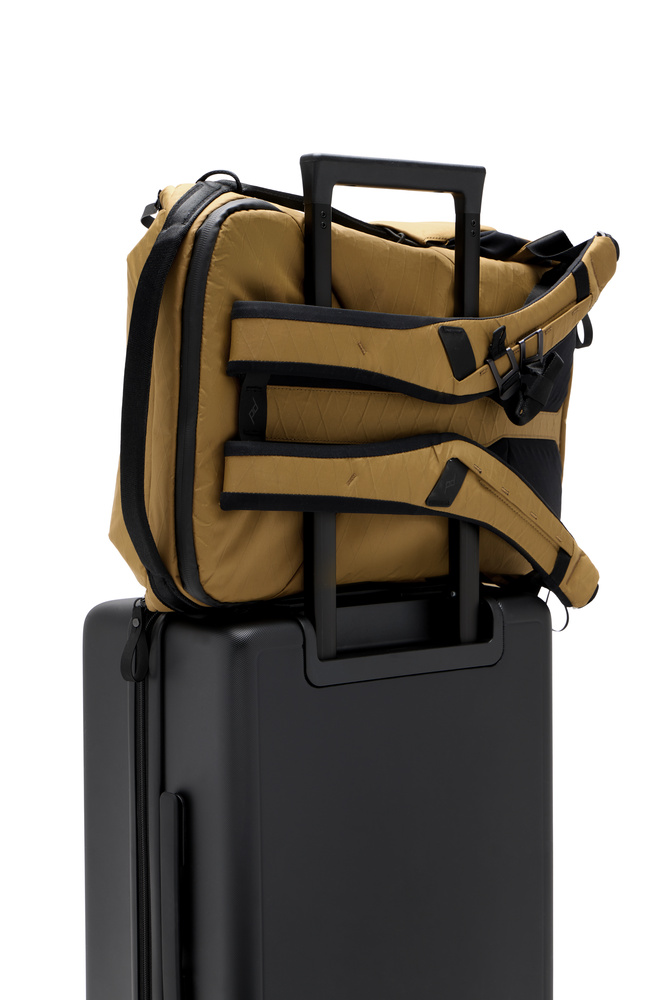
Furthermore, from a personal safety point of view, brighter colors make it easier to find when something goes wrong in the hills and you need rescuing. There have been some tragic cases recently of people going missing in rough terrain and not being found because they were dressed in dark clothing that blended into the environment.
The Backpack's Features
The main compartment can be accessed in various ways. The top flap has an elasticated hook that latches onto any one of a series of small rails. This hook fastener is also magnetic, which improves security. For even more added security, two compaction straps secured in the expanding side pockets attach to loops inside the lid. They help prevent unwanted hands from reaching into the bag.
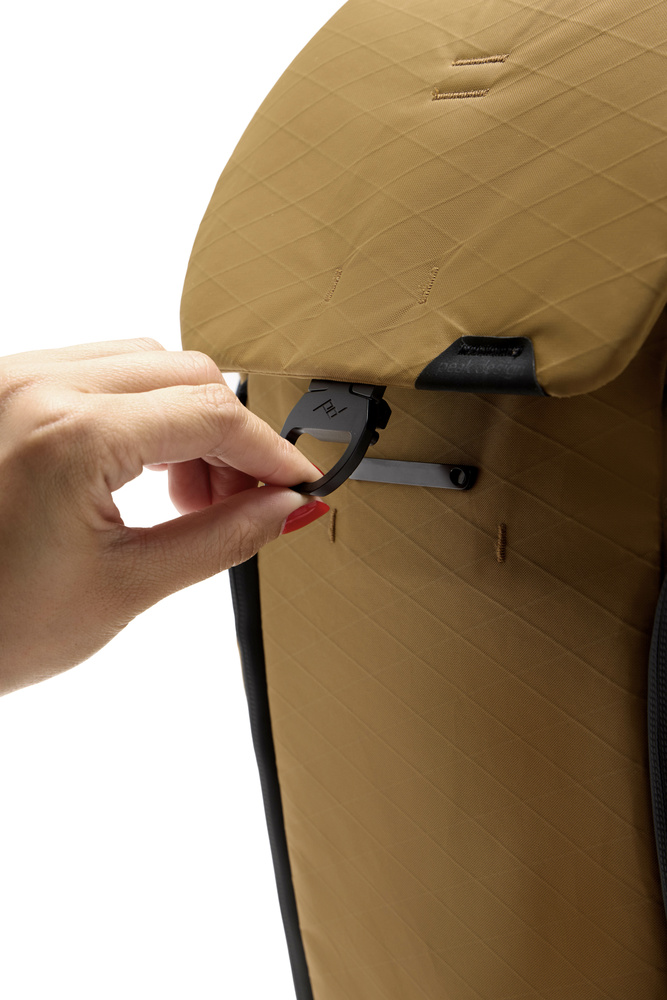
As well as the top opening, the bag's insides can be accessed using the two full-length double-zip openings.  These can be secured shut by buttoned tabs on the zip that can be threaded through loops at either end of the opening. On the inside of each side opening are flap pockets. The upper pocket is fastened with a magnet and the lower by a zip.
These can be secured shut by buttoned tabs on the zip that can be threaded through loops at either end of the opening. On the inside of each side opening are flap pockets. The upper pocket is fastened with a magnet and the lower by a zip.
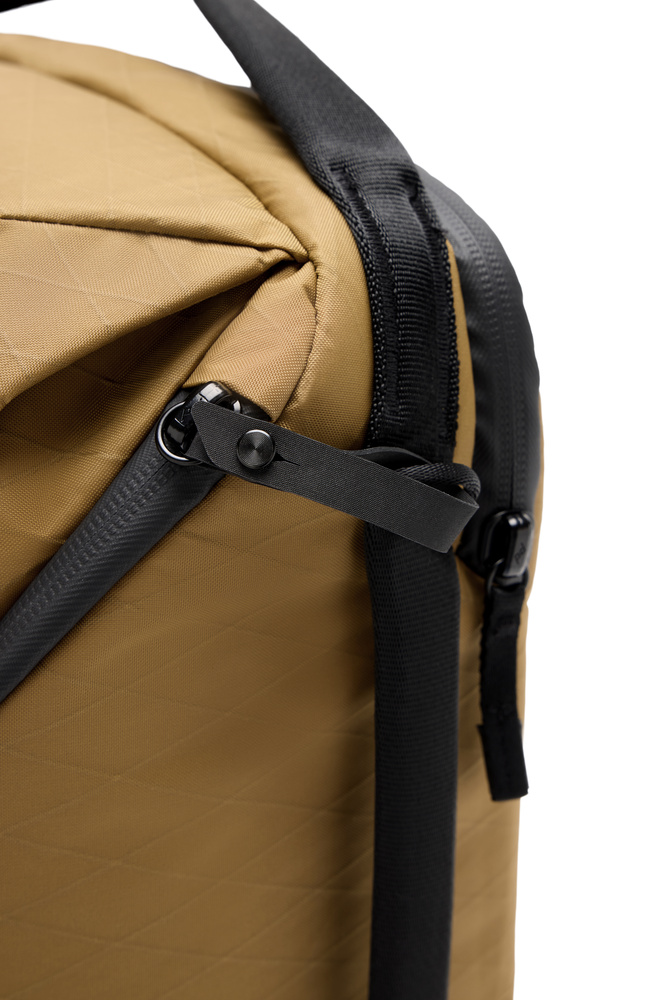
The bag's shoulder straps can be lengthened, allowing you to wear the bag across the body to access the bag from those side openings. Those shoulder straps also pivot on their top attachment, making it more comfortable to wear that way, and can be lengthened for that purpose too. They are also magnetic and fasten snugly to the back of the bag in storage. The bag is supplied with a sternum strap that fits between the straps. A waist strap is available separately.
On the rear of the bag is a breathable vented mesh panel.
At the bottom, on the front, is a magnetically sealed pocket for holding the additional carrying straps. These can be used for attaching items like a small bivouac tent.

As mentioned earlier, two expanding side pockets are suitable for a small tripod or a drinks bottle. Each side also has a carrying handle, and there is one of those at the top of the bag too. Attached is an elasticated tether that comes with a Peak Design anchor and anchor link for attaching your keys. Then, next to that handle is a weatherproof zipped adjustable compartment for holding a 14” or 16” laptop. That also has internal pockets for your various ephemera.
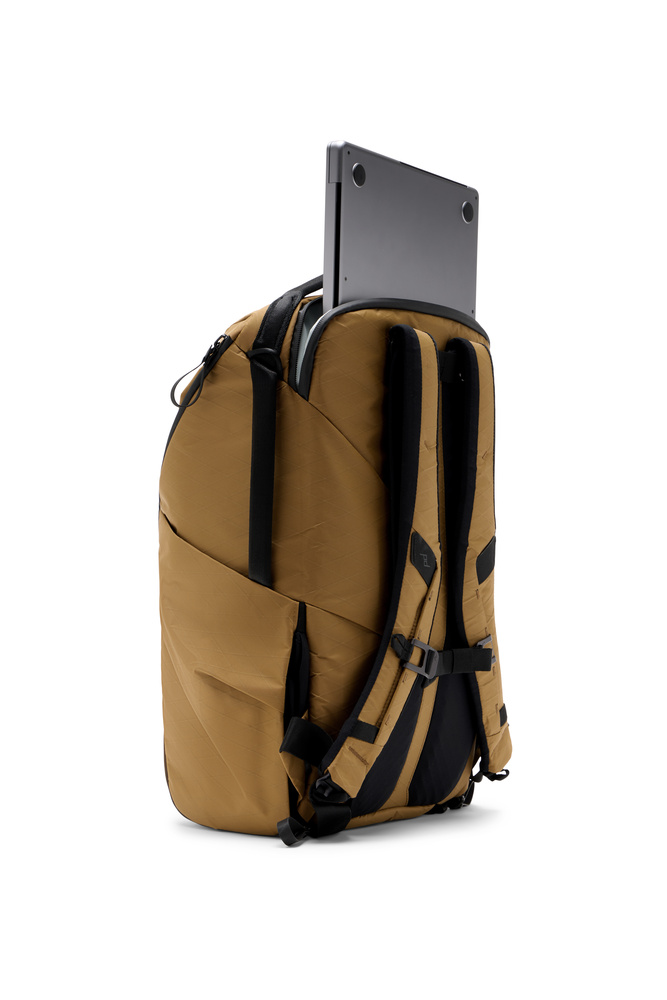
Like all PD bags, the internal sections of the bag are light gray, making it easy to see what you are looking for inside. It’s compartmentalized by three Velcro-secured, adjustable organizers. These can be raised and lowered, and folded in various ways to hold different-sized gear. They can also be removed completely.
In Use
I’ve had camera bags in the past, but apart from my PD Travel Backpack when I am going on a journey, I rarely use a camera bag. Normally, I am out with just my camera and maybe a tripod. Sometimes, I take two cameras and two tripods, but my gear is light enough for me to walk to a location without issue.
I rarely even take a spare battery, and if I do, I can fit it and my ND1000 filter in my pocket. When I run a workshop, I usually have my camera around my neck and the various accessories in an ordinary and slightly tattered small haversack. So, I approached this with a hyper-critical eye. Does it offer me enough to warrant upgrading to a premium backpack?
However, in a couple of months, I am planning a lot of walking, so a bag like this will prove to be useful.
The bag is comfortable to wear and sits nicely on my shoulders, helped by the hinged attachments at the top of the straps.
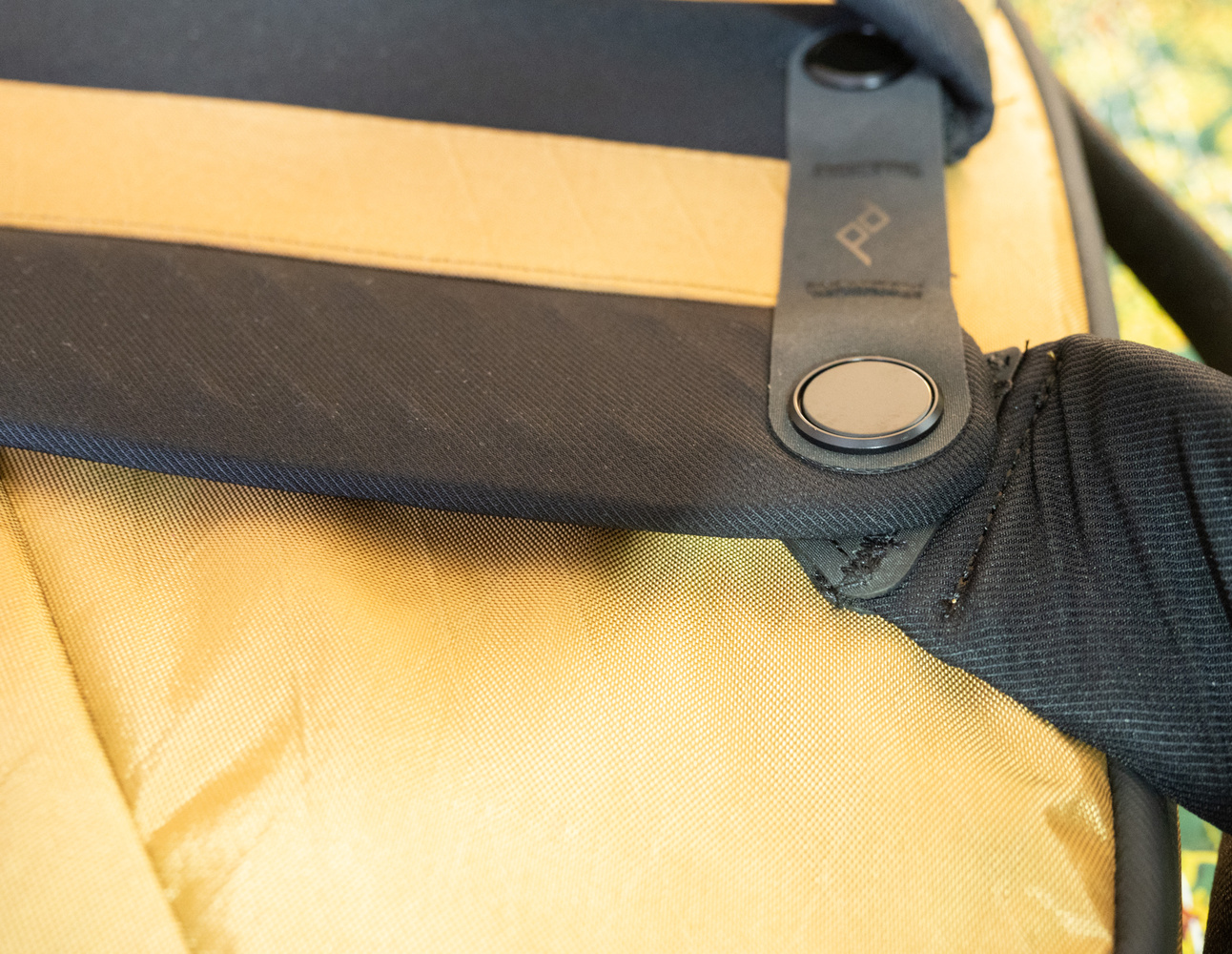
With the rearrangement of the adjustable Flexifold organizers, I could easily organize and pack both of my OM-1 cameras with their 12-40mm and 40-150mm lenses attached, and there was plenty of space for my waterproofs and lunch pack with room to spare. I could even use it with my larger 150-400mm lens and still have room for my other gear. Somebody walking with a full frame 35mm behemoth of a camera and a long lens could also comfortably use this bag and carry a tripod too.
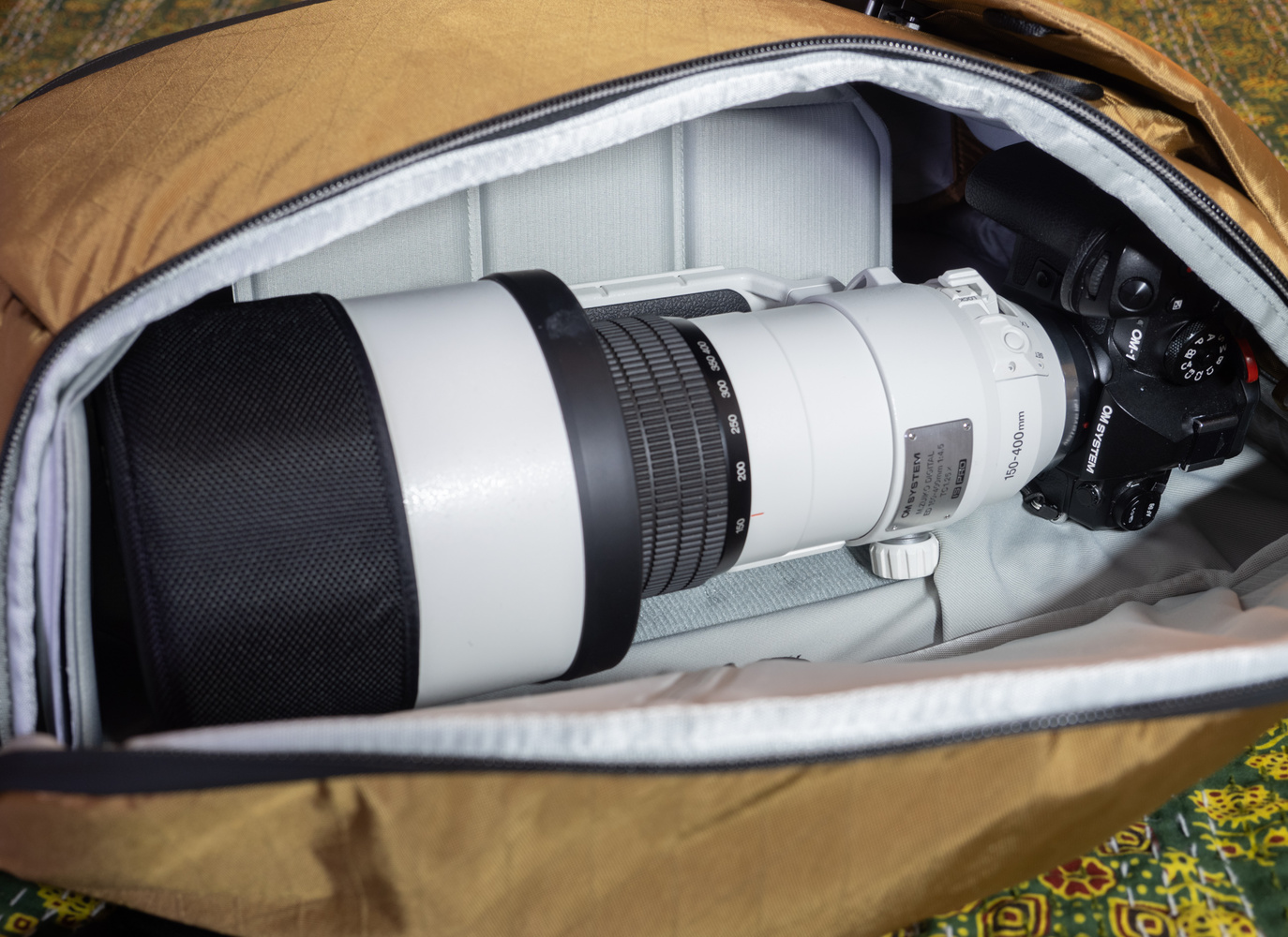
It's well made. The waterproof zips stood up to being held under my shower, and the water beaded and ran off the fabric. The stitching is neat, and all the additions, such as the strap hooks and handles, felt reassuringly secure.
One of my smaller travel tripods would fit comfortably in the side pocket, but my larger one with a folded length of 57 cm I could only accommodate when strapped to the outside. Nevertheless, it attached securely. The internal pockets gave lots of options for storing small pieces of equipment such as straps, filters, memory cards, and batteries.
Walking into locations one or two miles beyond where I parked, I found it easier to use the Everyday Backpack than carrying my tripod and camera by hand, and even more so when I was carrying my biggest lens.
Accessing the content was easy, and I found the one-handed action to open the top pocket particularly easy to use. I think PD has upgraded the magnets from those on the Travel Backpack, and they held much more securely.
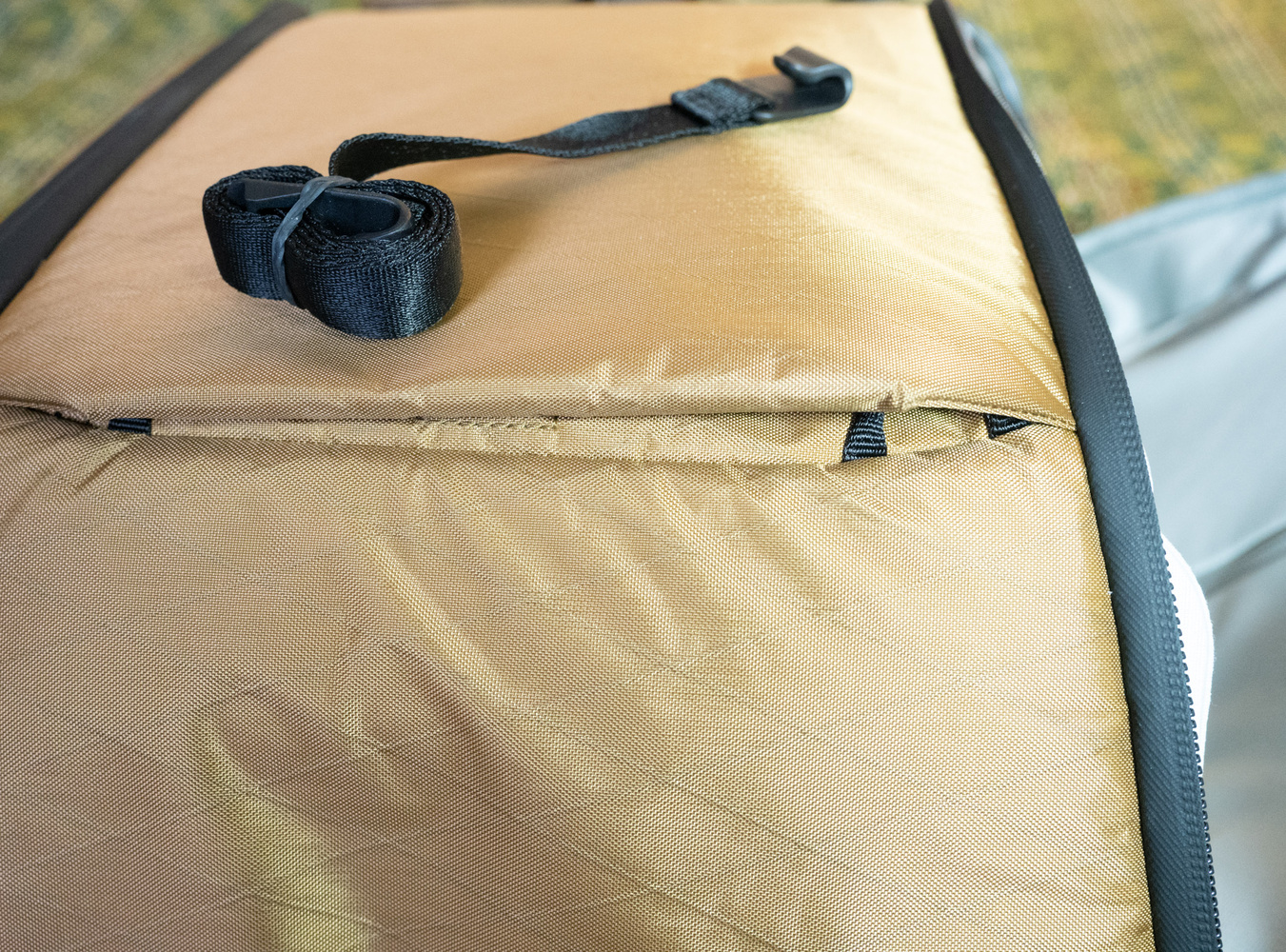
Using it when running a workshop, I found it easier to use than my old haversack, partly because the Everyday Backpack gave more space inside and was better organized, but also because it’s much easier to see inside because of the light gray internals. I could slide the handouts into the laptop slot and all the props I use would organize gear neatly into the main compartment.
Anyone who has hiked any distance with a backpack will appreciate that a waist strap is essential, more than a chest strap. Indeed, most walking backpacks have one permanently attached. One is available for the Everyday Backpack, but it must be bought separately. It’s not that expensive, but it would attract more people to this bag if the strap were supplied with it.
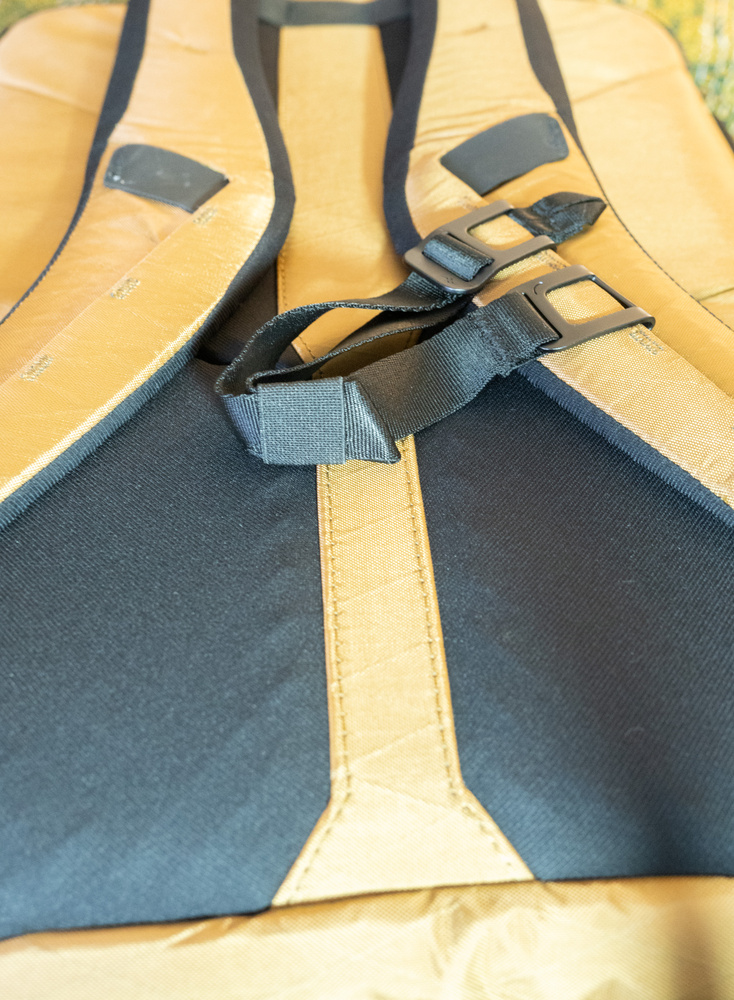
Who is This Bag Designed For
I think the Everyday Backpack has a particular type of photographer in mind. It’s designed for those who will hike for up to a few hours, getting away from the bustle of the city but staying in safe or familiar territory. It’s what we in the UK call rambling. Ramblers might walk up a hill, into a forest, or along a beach, sticking to well-trodden paths at an easy pace. For bird watchers, sunrise landscape photographers, or nightscape photographers who walk a few miles from their car, this will be ideal. It also carries nicely on the back when cycling, so touring cyclists will like it too.
The build of this Everyday Backpack is better quality than many rucksacks designed for hiking, so it might even appeal to non-photographers.
Although probably not a concern for amateurs, this new Coyote colorway might also appeal to professional photographers who want consistent branding across their gear. The unique color looks good and is also available in a range of other new products, so there is an opportunity for that.
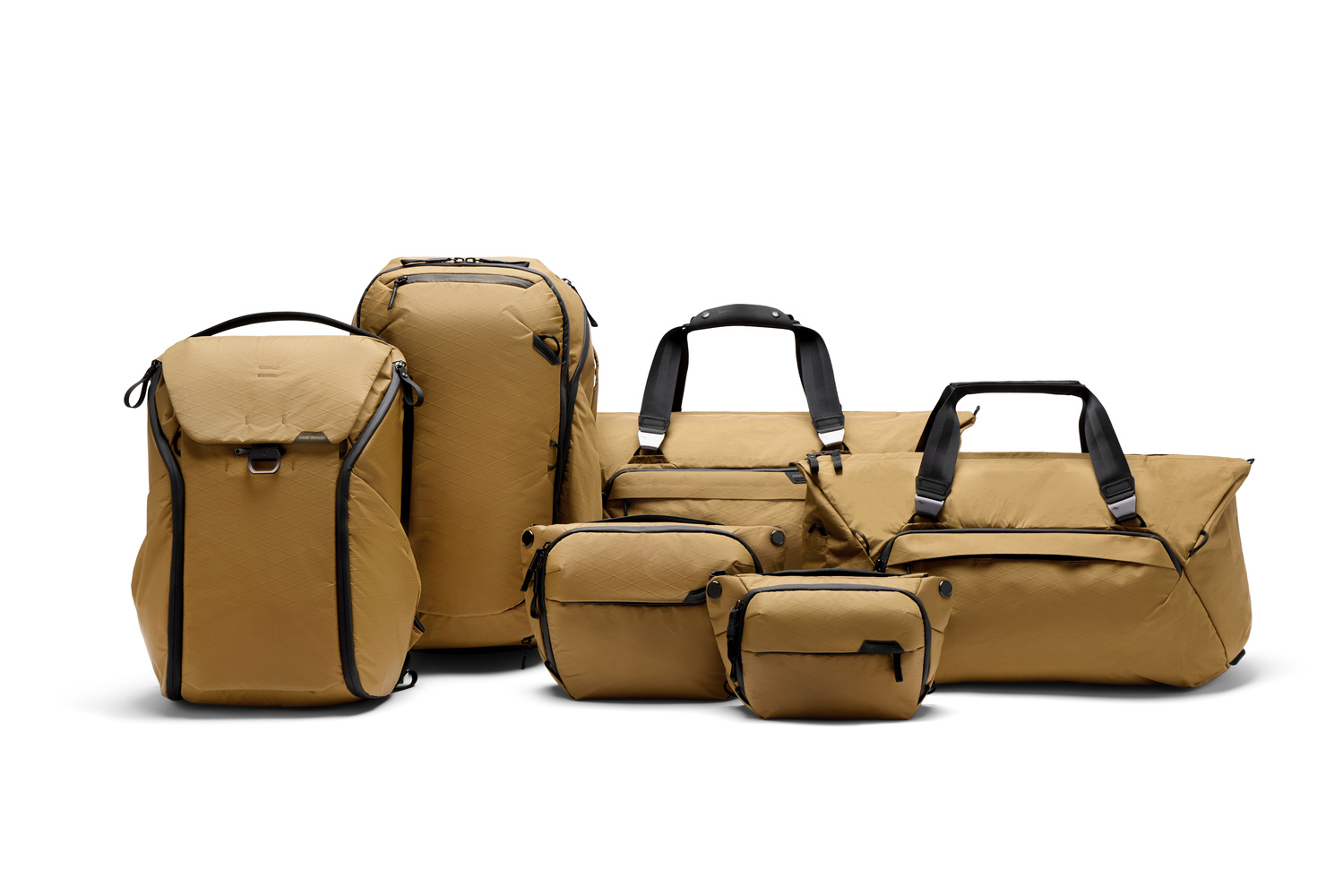
Who The Everyday Backpack Isn’t For
I don’t think it is the pack for those who will walk up mountains where the weather can turn dangerous at the blink of an eye and where precise navigation is necessary. Why? Firstly, it isn’t big enough to pack the gear you want to take with you. I’ve hiked in the Scottish Highlands and set off in shorts and a T-shirt and then had to change into a fleece jacket and a full set of waterproofs, and then hide beneath the portable emergency shelter I carried when hit by high winds and a hailstorm.
There’s not enough room for all that gear. So, it would be nice to see some larger versions of this. A 45L version would be better for people going on serious day backpacking in the wilds, and a 60L or 75L model would suit those who hike and camp out in the wilds and want to take a camera.
Secondly, if using this backpack when navigating, it will result in magnetic deviation if you are using a magnetic compass. With my compass held a foot in front of me, it was off by 10° when using this backpack. That’s not what you want when navigating down a mountain with sheer drops you want to avoid in thick fog. So, Peak Design, if you do read this and think about making a larger model, and I hope you do, leave the magnets out on those.
For a few people, although the color is not overly bold, it might be off-putting as it does draw attention, which in some circumstances might be unwanted. However, there are other colors in the range that are more discreet
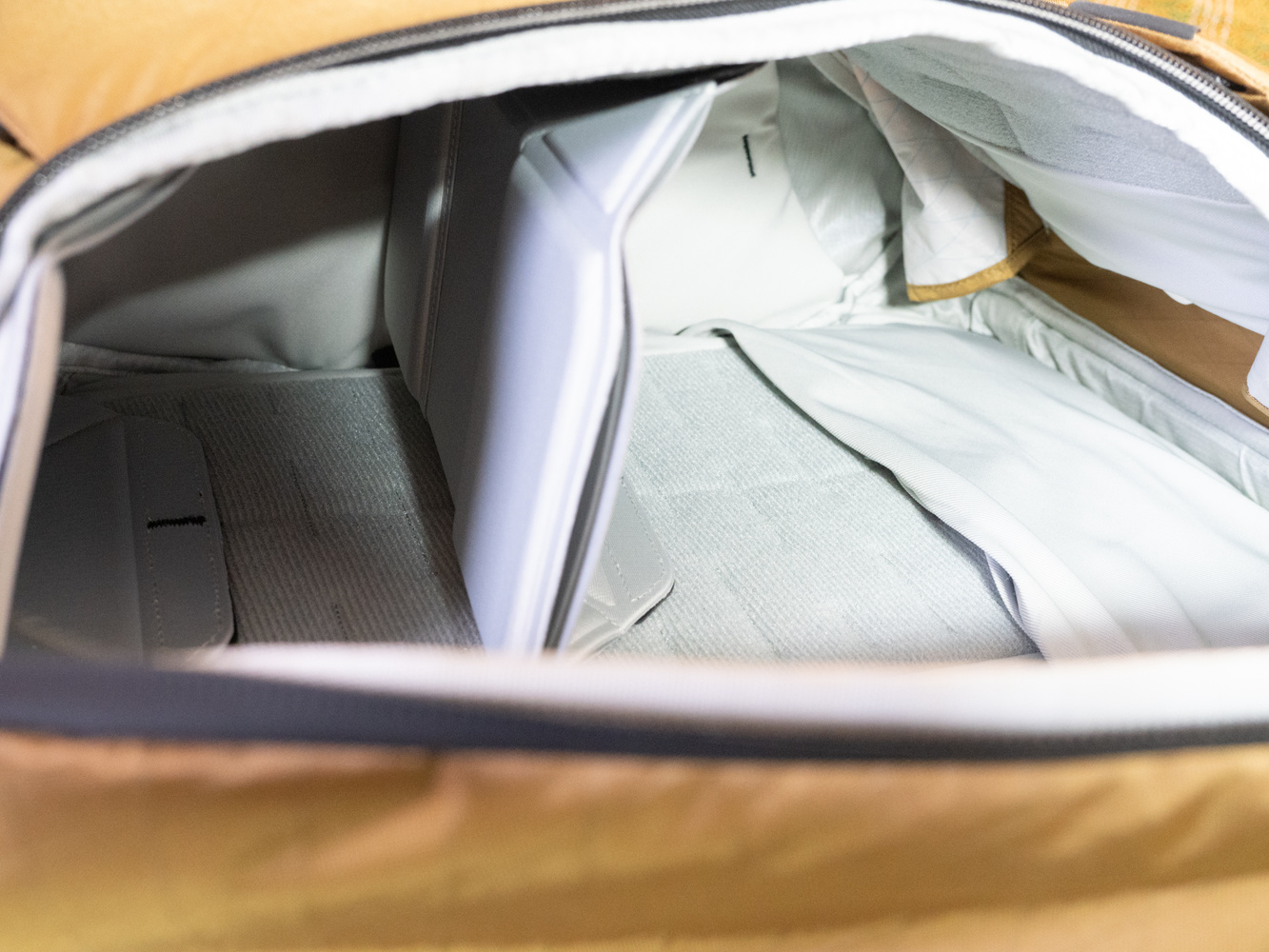
What I Liked and What Could Be Improved Next Time
What I Liked
- Very well made.
- Cleverly designed and versatile enough for different uses.
- Practical and ergonomic.
- Weatherproof.
- Attractive new color that will cohere with other products in the range.
- Components are compatible with other Peak Design gear.
- Discrete logos so the bag does not scream that it contains expensive camera gear.
What Could Be Improved Next Time
- Inclusion of a waist belt.
- Larger versions without magnets for serious hiking.
In Conclusion
This is an excellent bag. For general use, I haven’t come across anything better than this. It is aimed at a certain audience, and it has achieved that with aplomb. That targeted audience is probably the largest group of photographers out there, so it should prove popular.
There is a narrower market for the serious hillwalker or mountaineer for whom this won’t be the perfect camera bag. Although it has inherited some of the design features such as easy accessibility and waterproofing that they seek.
The thought that has gone into the design and build, plus the positive environmental impact.
Available from B & H, the Everyday Backpack retails at $299.95 for the 20L version and $324.95 for the 30L.








Thanks for the comprehensive review, Ivor.
I tried to find a pack that was suitable for my needs two summers ago, while in Arizona for a month-long excursion photographing herps in the Sonoran Desert. I never did find anything even close to suitable, so I bought some needles and some SpiderWire (super strong fishing line) and sewed my old pack up in all the places where the seams had split and where the fabric had outright torn open. I still use this pack today, because I have not yet found anything that could suitably replace it. But it looks like this type of pack might actually fit my needs quite well.
I would definitely need a larger version, because of all the items that MUST be with me while afield.
And the color, while not bad, is a bit bold. But I can easily take care of the overbold color by taking a handful of mud or soil and rubbing it into the fabric to blend some mud brown into that vibrant tan color to knock down whatever sheen it has. I actually really like tan, but only if it is a natural looking tan, which means subdued and rather dull. Bold and vivid colors stand out and I am trying to keep people from being able to spot me from a distance when I am afield.
The items that take up a bit of space that I need to have along while hiking for photography are:
3 quarts of water (minimum)
lunch / snacks ... must have enough space so that fragile foods will not get smushed
DSLR camera body
2 lenses
waterproof ground cloth folded up, must be at least 4'6" by 7', and heavy enough to resist cactus spines from poking thru
spare fleece garment (for warmth)
waterproof garment for rain
wide-brimmed hat
small highly absorbent towel about 12" by 18"
spare socks, thick and heavy
spare tee shirt, very lightweight polyester
headlamp and at least 3 sets of extra AA batteries (each set is 4 units, so 12 batteries total)
heavy leather elbow-length gauntlets for handling venomous snakes
several snake bags to put captured snakes and lizards into for transporting to more photogenic locations ..... pack must have enough space so that live snakes and lizards can fit without being smushed by the other gear
I think a 45 liter bag would handle all of this, but I know a 30 liter bag won't. Anxiously waiting for them to expand their product lineup.
Can you give us a link to a list of retailers who have brick and mortar locations where we can go to get our hands on this gear, instead of just guessing whether it will be suitable or not based on reviews and photos?
I know you said it is available at B&H, but their showroom is an hour and a half from here, with expensive tolls in between, and I really don't feel like making a 3 hour round trip just to see if a backpack will work or not. Having a list of stores closer to me would be so helpful.
I'm not familiar with the stores in your neck of the woods, Tom, and it wouldn't be practicable to provide a worldwide list of stores for every reader. It's similar for many people, including me, and I guess Google Maps is your friend there. In the USA alone there are 1227 camera stores.
Yes, some people want to be seen and others don't. The bag is available in different colors.
I think you fit into the narrower market that I mentioned in the conclusion. From your kit list and needs, I agree you need an expedition-size backpack that would enable you to spread your gear and make it accessible. So a cube system like PD's would suit you but in a bigger bag. Its 65L Travel Duffelpack might suit you, but I would recommend going into a shop to try it or buy where there is an option to return it. It is a hybrid backpack and duffel bag, so I don't know if that will suit you for long marches into the wilds. It costs around $220, Alternatively, Atlas Packs make the Adventure Camera Backpack that Expands from 35 - 60 Liters. I've not tried it and that's not a recommendation. It retails at $485.
Thanks for the long comment!
That's great info, Ivor! Thank you. I'll look for some YouTube videos on that cube system dufflepack that you recommend.
I was thinking that if you have been in contact with the manufacturer, as many who write such reviews are, they may have a list of retail locations that their gear is available at, and you could just get it from them and then copy & paste it here or post a link to it here. I certainly wasn't suggesting that you create such a list from scratch.
My expeditions are not very long ..... I mean they do not cover many miles or many hours. I wouldn't even consider them to be expeditions, they are just day hikes or half-day hikes. Typically I am away from the car for 3 to 6 hours at a time, rarely any longer than that. And I usually only cover 5 or 6 miles per outing. But if I don't have all the items in my list, then things do not go well and I can not photograph properly. I must be well equipped for the photography itself, and my body must be comfortable and well fed and well hydrated at all times. This requires taking a bunch things with me.
..... especially water. When traveling in the heat, I do not understand how anyone can hike for 5 or 6 hours and only take one and a half liters of water. I would be parched if I tried to skimp on hydration like that. And water is HEAVY and requires a fair amount of space.
https://uk.peakdesign.com/pages/retail-stores There you go. There's a zoomable map with the stores stocking the PD gear.
That's great Ivor! Thanks!
Turns out there are three PD retailers within 8 miles of where I'm staying now.
I wish more bags would include a side pouch for your tripod. I'm not always sold on side loaders and tend to go for more utilitarian bags that looks less fashionable and more useful, but this is a beautiful bag! You don't see this color often
Patrick Hall wrote:
"I ... tend to go for more utilitarian bags that looks less fashionable and more useful"
I'm with you, Patrick
I don't really care what a bag looks like, as long as it is able to blend in to the habitat. We get these things as tools, not as a fashion statement. The photos we take are the things that are supposed to look good, not us or the gear we use ..... lol.
Thanks Patrick. The side pouch worked well for a travel tripod, and I could also fit it inside the bag sitting vertically with the origami-styled inserts having one edge folded up. Subsequently to writing this review, I also found that putting my larger tripod would sit securely, across the top of the bag under the lid.
As for the color, I get your point Tom This would not be the bag for stalking wildlife unless working in an autumnal deciduous forest! I guess that is why it is made in other colors too. Thanks for the comments.
Good review, I will say I'm surprised you found the bag comfortable. I personally thought the straps dug into my shoulders and was uncomfortable for Anything over an hour. It's a great bag for small trips and keeping things organized in my car but for a whole day of hiking I greatly prefer the straps on the Wandrd Prvke or Boundary errand.
Thanks for signing up to comment on this review and promoting different bags. I haven't tried those so cannot comment. I didn't find that discomfort issue at all. Perhaps that has to do with body shape and size not suiting particular shapes of bags. The PD's wide padded straps were comfortable for me.
Great design. Uncomfortable to wear, unfortunately. I think the design is great but PD need to do some work on the back support and include a decent waist belt. Unfortunately, the absolute minimisation of weight has come at a big cost in comfort.
I guess that has to do with body shape and size and different designs of bags suit different people. My wife and I found it comfortable to wear; she is much smaller than me. I used it all day last week and had no issues with it at all. However, I agree with the need for a waist strap. Thanks for the comment.
I still miss some sort of lock on the upper flap. And for good sake, could they put some reflectors on the damn bags. I live in Sweden and it's starting to get dark around noon here and we are bracing ourselves for winter and darkness.
Good point, Patrick. I guess it is possible to place a lock between the two eyes on either side of the lid, threading it through the flap's latch handle,
The finish on this bag is shiny, so it does reflect more than a black bag would, but I fully understand what you mean about having a reflector. If I were in your situation I would hang reflector disks from it, the type that many kids have on their backpacks in the winter. I found a set of 20 for £3.79 GBP (13.35 Swedish Krona) on Amazon here in the UK.